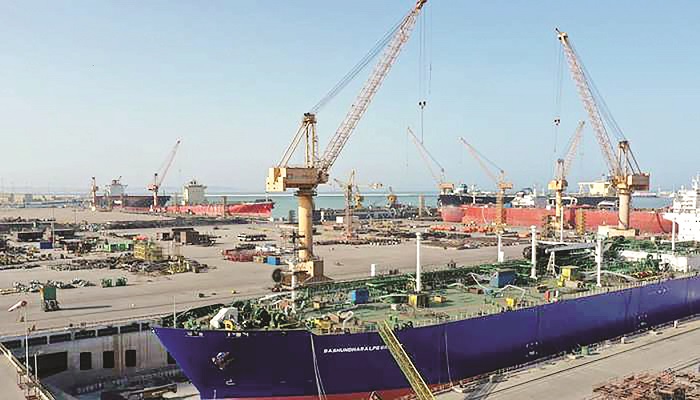
Muscat: Oman’s Long-Term Foreign Currency Rating (LT FCR) and Long-Term Local Currency Rating (LT LCR) was raised to ‘BB+’ from ‘BB’ by Capital Intelligence Ratings (CI Ratings) on Friday. At the same time, CI Ratings has also affirmed the sovereign’s Short-Term FCR (ST FCR) and ST LCR at ‘B’. The Outlook for the ratings has been revised to Stable from Positive.
“The upgrade reflects the continued decline in gross central government debt and CI’s expectation that fiscal and external balances will remain in surplus in 2024-2025, benefitting from favourable hydrocarbon prices and sustained reform momentum,” CI Ratings said in a statement on Friday.
“The improvement in the public finances is supported by prudent fiscal and debt management policies. the latter aim to reduce the budget’s vulnerability to fluctuations in oil prices and lower central government debt significantly through the use of recent hydrocarbon windfalls to repay, prepay and buyback expensive external debt,” the international rating agency further said.
“The ratings are also supported by Oman’s commitment to structural reforms as outlined in Oman Vision 2040, as well as the relative soundness of the banking system and CI’s expectation that financial support for the sovereign would be forthcoming from other GCC countries in the event of need,” it further added.
The government budget remained strong in 2023, posting a surplus of 5.2 percent of the gross domestic product (GDP), compared to 7.2 percent in 2022. This was attributable to favourable hydrocarbon prices, as well as the continuation of fiscal consolidation measures, including spending rationalisation and lower food and energy subsidies. Central government debt declined to 36.8 percent of GDP at end-2023, from 42.6 percent at end-2022.
“This decline was due to the repayment of debt to the tune of 4.8 percent of GDP (through the buyback of eurobonds and sukuk, and the prepayment of syndicated loans equivalent to OMR1.8 billion in the second half of 2023). The decrease in external government debt has helped to improve the debt structure (although the majority of debt is still denominated in foreign currency and held by non-residents) and alleviate some of the pressure on the interest bill arising from tighter local and international monetary policies,” the rating agency said.
Interest expense declined to 5.9 percent of total revenues in 2023, from 6.7 percent a year earlier, and will remain at an estimated 6 percent over the next two years.
Government contingent liabilities stemming from State-Owned Enterprise (SOE) debt remain a potential, albeit declining, source of fiscal risk. Following the reorganisation of non-hydrocarbon SOEs under the Oman Investment Authority (OIA) and hydrocarbon SOEs under Energy Development Oman (EDO), SOEs have been deleveraging, with debt falling to around 26 percent of GDP in 2023 (from 29 percent in 2022). Just over a quarter of the debt is directly guaranteed by the Omani government.
Moving forward, CI’s baseline scenario assumes that hydrocarbon prices will remain high throughout 2024-25, averaging $77.5 per barrel and exceeding the budget’s average fiscal breakeven oil price of $70 per barrel. “We expect the central government budget surplus to average 3.1 percent of GDP during the forecast period, and central government debt to decline further to 33.2 percent of GDP by end-2024, which is lower than our previous projection of 35.9 percent,” CI Ratings said in the statement.
Oman’s ratings continue to be supported by the government’s commitment to structural reforms that aim to diversify the economy, strengthen the public finances, as well as increase the participation of the private sector while protecting the vulnerable. “In this regard, the government passed several new laws in 2023, including the labour law and social protection law – which saw the establishment of Oman’s Social Protection Fund. This year the government is expected to press ahead with efforts to gradually reduce the state’s footprint in the economy via its divestment programme,” the rating agency said.
External strength is improving, with Oman’s current account position remaining in a large surplus of 5.1 percent of GDP in 2023 (6.4 percent in 2022). This improvement is expected to be maintained, with the current account forecast to post surpluses averaging 4.3 percent of GDP in 2024-25. Official foreign currency reserves at the central bank (which do not include the external liquid assets of the OIA) remained unchanged at $17.5 billion in October 2023, with debt repayments and prepayments preventing further accumulation of foreign assets. “Reserve adequacy is high, with official reserves providing approximately 261 percent coverage of external debt falling due in 2024 and 37.8 percent of broad money (M2). In our opinion external liquidity risks are also mitigated by the likelihood that Oman would receive financial assistance from more affluent GCC countries if needed,” the rating agency further added.
Economic growth softened in 2023, reflecting voluntary hydrocarbon production cuts. Real GDP is expected to have expanded by around 2.1 percent in 2023, and is projected to increase by an average of 2.4 percent in 2024-25. Oman’s current growth outlook benefits from external demand for crude and condensate oil and key manufacturing goods (e.g. plastics, chemicals, base metals). Moreover, economic growth is expected to benefit from high FDI in the hydrocarbon sector, as well as infrastructural projects in the non-hydrocarbon sectors.
The relatively sound financial condition of the Omani banking sector, which benefits from good capital buffers and a currently moderate stock of non-performing loans, is a supporting factor for the ratings. Moreover, reliance on cross border funding continues to decline, with foreign liabilities accounting for 11.4 percent of total liabilities in October 2023 (12.5 percent in December 2022).